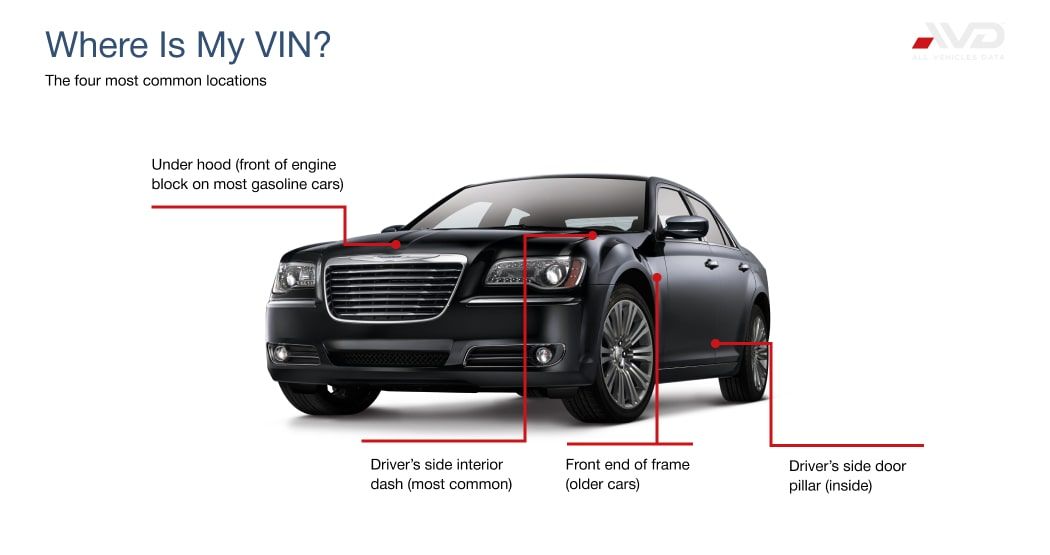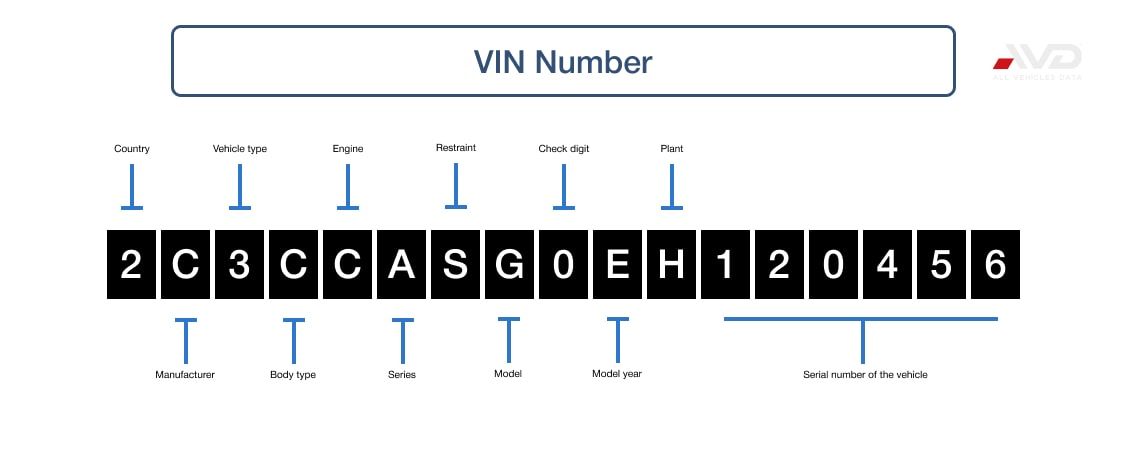What is VIN Lookup in Canada?
VIN Lookup in Canada is crucial for identifying and verifying a vehicle's history. This process involves using a Vehicle Identification Number (VIN) to access detailed information about a car, including its manufacturing details, registration, accident history, and more. To conduct a VIN lookup in Canada, individuals can visit the Transport Canada website. This search requires the specific VIN of the vehicle in question.
What Is a Vehicle Identification Number?
A Vehicle Identification Number (VIN) is a unique code assigned to every motor vehicle when it's manufactured. Comprising 17 characters, the VIN acts as a fingerprint for the vehicle, providing a wealth of information, including its make, model, and place of manufacture. This identifier is crucial for tracking recalls, registrations, and the vehicle's history. The VIN is integral to the automotive industry and is governed by standards such as those in the Canadian Motor Vehicle Safety Standards.
Why the VIN Is Important
Vehicle Identification: The VIN is a distinct identifier that ensures that every vehicle can be distinguished from another, underpinning the integrity of various automotive systems and processes.
Vehicle History: One of the most pivotal uses of the VIN is in tracking a vehicle's history. Utilizing the VIN can gain insights into a vehicle's previous ownerships, accident involvements, repairs, and more. This is especially vital for potential purchasers, providing a clear snapshot of the vehicle's past.
Vehicle Safety Recalls: Safety recalls are imperative for maintaining the welfare of vehicle occupants and the general public. The VIN facilitates manufacturers and governmental bodies, like Transport Canada, to pinpoint specific vehicles affected by recalls. Through this identification, necessary modifications or repairs can be carried out to address potential safety concerns.
Maintenance and Repairs: Automotive service professionals and mechanics rely on the VIN to discern a vehicle's exact make, model, and specifications. This ensures the right parts and procedures are employed, safeguarding the vehicle's performance and longevity.
Insurance Purposes: For insurance entities, the VIN is critical in determining a vehicle's specifics. This encompasses the vehicle's make, model, age, and other attributes influencing policy terms and premium rates, thus ensuring accurate and tailored insurance coverage.
Vehicle Registration and Compliance: The VIN plays an instrumental role in vehicle registration across Canadian provinces and territories. It aids regulatory bodies in verifying the vehicle's specifications, origin, and adherence to national and provincial standards. This is particularly crucial for vehicles imported into Canada, ascertaining their compliance with Canadian automotive regulations.
How To Find Your Car’s VIN Number?
A vehicle's VIN and its associated paperwork can be located in multiple places on the vehicle. On most vehicles, the VIN can be found:
- On the dashboard near the windshield on the driver's side
- Inside the driver's side door on a sticker or plate
- On the vehicle's title, registration, and insurance papers.
Should there be any difficulty locating the VIN, the vehicle owner's manual often guides where to find it.
For more guidance, visit Canada's Vehicle Registration page.

How Many Digits Are in a VIN?
A VIN consists of 17 characters, including numbers and letters. The National Highway Traffic Safety Administration established this standardized length in 1981 in the United States, and it is used globally, including in Canada.
How To Decode the Vehicle Identification Number?
Decoding a VIN reveals specific information about the vehicle. Each of the 17 characters in a VIN signifies particular attributes of the vehicle:
- Characters 1-3 (World Manufacturer Identifier): Identify the vehicle’s manufacturer and country of origin
- Characters 4-8 (Vehicle Descriptor Section): Provide details about the model, body type, engine type, etc.
- Character 9 (Check Digit): Validates the VIN
- Character 10 (Model Year): Indicates the year of manufacture
- Character 11 (Assembly Plant): Identifies the plant where the vehicle was assembled
- Characters 12-17 (Vehicle Identifier Section): A unique serial number for the vehicle.
For decoding assistance, refer to the Canadian Council of Motor Transport Administrators.

Is Engine Number Different From VIN?
Yes, the engine number is different from the VIN. The engine number is specific to your vehicle's engine, while the VIN identifies the entire vehicle. The engine number can help identify particular parts and repairs for the engine.
How Is a VIN Number Used?
A VIN serves multiple purposes:
- Identification: Differentiating every vehicle from one another
- Registration: Required for registering a vehicle
- Recall Information: Used by manufacturers to inform owners of recalls
- Vehicle History Tracking: Assisting potential buyers in understanding a vehicle's history, including accidents or theft
- Insurance: Insurance companies use VINs to identify and insure vehicles.
Who Issues a Vehicle’s VIN Number?
The manufacturer issues vehicle VINs. Each vehicle produced by a manufacturer is assigned a unique VIN that adheres to international standards. In Canada, vehicle manufacturers must comply with standards set by Transport Canada.
What Is a VIN Inspection?
A VIN inspection involves verifying a vehicle's VIN against official documentation to ensure its authenticity. In Canada, a VIN inspection may be required if the VIN displayed on a vehicle is different from its associated paperwork or if the vehicle is imported.
In Canada, VIN inspections are conducted by provincial transportation agencies.
What Is the Process for Searching for a VIN?
To search for a VIN in Canada:
- Acquire the 17-character VIN
- Use an accredited online platform or service to conduct a VIN search
- Pay any associated fees if necessary
- Review the resulting report or information.
The process of searching for a VIN involves locating the number on the vehicle or related documents and then using various online tools or services to retrieve information linked to that VIN. Government websites and authorized dealers provide resources for VIN lookup. The Canadian Automobile Association offers guidance on detailed steps.
How Can I Check a VIN for Free in Canada?
In Canada, you can check a VIN for free using online tools provided by various government and non-government organizations. Websites like the Insurance Bureau of Canada offer free VIN check services to provide basic vehicle information.
How To Use the VIN Decoder To Do a VIN Number Check?
Utilizing a VIN decoder involves:
- Entering the 17-character VIN into the decoder's input field
- Submitting the request
- Reviewing the detailed breakdown the decoder provided about the vehicle's attributes and history.
To use a VIN decoder for a VIN number check, enter the 17-character VIN into the online tool. The decoder will process the information and provide details about the vehicle, such as make, model, year, and manufacturing location. For a comprehensive decoder, visit the Transport Canada VIN Decoder page.
VIN Lookup by License Plate in Canada
VIN lookup by license plate in Canada is possible through various online services. These platforms use the license plate number to access public records and retrieve the associated VIN and other vehicle details. Provincial transportation department websites offer resources for this service.
What Is Included in the Vehicle History Report in Canada?
A vehicle history report in Canada typically includes the following:
- Vehicle registration details
- Accident history
- Lien information
- Odometer readings
- Recall information
- Ownership history.
- Potential title issues
- Any reported thefts
- Maintenance records
What’s the Difference Between Vehicle History Report vs. VIN Check?
A vehicle history report offers a detailed history of a vehicle, including past ownership, accidents, and maintenance, while a VIN check typically provides basic vehicle information and specifications. Both are valuable tools for understanding a vehicle's background.
Is the VIN Audit Legit in Canada?
Yes,VIN audits are a legitimate and often necessary process in Canada, especially for imported vehicles or when verifying a vehicle's history and specifications. Using government-recognized services or reputable third-party providers for official purposes is advisable.
Can You Look Up Vehicle Specs by VIN?
Yes, individuals can retrieve specific vehicle specifications using the VIN, including make, model, engine type, and other manufacturing details.
Can I Check My VIN Number Online?
Yes, there are multiple governmental and private online platforms where Canadians can check their VINs to obtain information about their vehicles.
How To Verify a VIN Number’s Validity?
- Check Length and Characters: A valid VIN has 17 characters, excluding the letters O, Q, and I, to prevent confusion.
- Use the Check Digit: The 9th character in a VIN is a calculated check digit. The VIN may be invalid if the calculation doesn't match this digit.
- Use Online VIN Decoders: Online tools can break down and confirm the validity of a VIN by matching it to known vehicle details.
- Contact the Manufacturer: Manufacturers can cross-reference VINs against their records to confirm authenticity.
- Check Government Databases: In Canada, agencies like the Registrar of Imported Vehicles (RIV) can verify VINs, especially for imported vehicles.
- Review a Vehicle History Report: Discrepancies between the report and the vehicle can indicate VIN issues.
- Inspect the VIN Plate: Ensure the displayed VIN hasn't been altered or tampered with. It is typically located on the dashboard or inside the driver's door.
- Consult Law Enforcement: If suspicious, law enforcement can cross-check the VIN against databases of stolen or fraudulent vehicles.
Can You Track a Car by VIN Number?
While a VIN can provide extensive information about a vehicle, it cannot be used to track the real-time location of a car. However, law enforcement agencies can use VINs to locate stolen vehicles by checking against databases of vehicles reported as stolen.
Can You Tell the Engine Size by VIN Number?
Yes, the VIN contains details about the vehicle's specifications, including the engine size. This information can be decoded from specific characters within the 17-character VIN sequence.